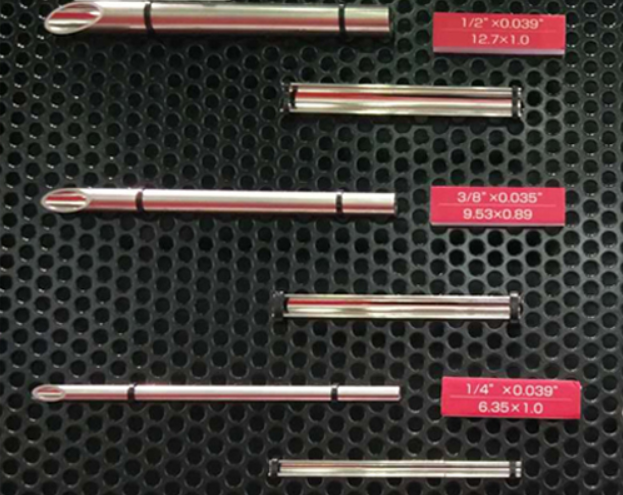I. Introduction
With the development of my country’s semiconductor and core-making industries, the application of high-purity gas pipelines is becoming more and more widespread. Industries such as semiconductors, electronics, medicine, and food all use high-purity gas pipelines to varying degrees. Therefore, the use of high-purity gas pipelines Construction is also increasingly important to us.
2. Scope of application
This process is mainly suitable for the installation and testing of gas pipelines in electronics and semiconductor factories, and the welding of thin-walled stainless steel gas pipelines. It is also suitable for the construction of clean pipelines in pharmaceutical, food and other factories.
3. Process principle
According to the characteristics of the project, the construction of the project is divided into three steps. Each step must undergo strict quality and cleanliness inspections. The first step is the prefabrication of the pipeline. To ensure cleanliness requirements, the prefabrication of the pipeline is generally carried out in a 1000-level prefabrication room. The second step is on-site installation; the third step is system testing. System testing mainly tests the dust particles, dew point, oxygen content, and hydrocarbon content in the pipeline.
4. Main construction points
(1) Preparation before construction
1. Organize labor and prepare machines and equipment used in construction.
2. Build a prefabricated room with a cleanliness level of 1000.
3. Analyze construction drawings, prepare construction plans based on project characteristics and actual conditions, and make technical briefings.
(2) Pipeline prefabrication
1. Due to the high cleanliness required for high-purity gas pipelines, in order to reduce the welding workload at the installation site and ensure cleanliness, the pipeline construction is first prefabricated in a 1000-level prefabricated room. Construction personnel should wear clean clothes and use Machinery and tools should be kept clean, and construction workers should have a strong sense of cleanliness to minimize contamination of pipes during the construction process.
2. Pipe cutting. Pipe cutting uses a special pipe cutting tool. The cut end face is absolutely perpendicular to the axis center line of the pipe. When cutting the pipe, measures should be taken to avoid external dust and air contaminating the inside of the pipe. The materials should be grouped and numbered to facilitate group welding.
3. Pipe welding. Before pipe welding, the welding program should be compiled and input into the automatic welding machine. Test welding samples can only be welded after the samples are qualified. After one day of welding, the samples can be welded again. If the samples are qualified, the welding parameters will remain unchanged. It is stored in the welding machine, and the automatic welding machine is very stable during welding, so the weld quality is also qualified. The welding quality is controlled by a microcomputer, which reduces the impact of human factors on the welding quality, improves work efficiency, and produces high-quality welds.
4. Welding process
High purity gas pipeline construction
(3) On-site installation
1. The on-site installation of high-purity gas pipelines should be neat and clean, and the installers must wear clean gloves.
2. The setting distance of the brackets should comply with the design requirements of the drawings, and each fixed point should be covered with a special rubber sleeve for the EP pipe.
3. When the prefabricated pipes are transported to the site, they cannot be bumped or stepped on, nor can they be placed directly on the ground. After the brackets are put on, the pipes are stuck immediately.
4. The on-site pipeline welding procedures are the same as those in the prefabrication stage.
5. After the welding is completed and the relevant personnel have inspected the welding joint samples and the welding joints on the pipes to be qualified, affix the welding joint label and fill in the welding record.
(4) System testing
1. System testing is the last step in high-purity gas construction. It is carried out after the pipeline pressure test and purging are completed.
2. The gas used for system testing is first of all qualified gas. The cleanliness, oxygen content, dew point and hydrocarbons of the gas should meet the requirements.
3. The indicator is tested by filling the pipeline with qualified gas and measuring it with an instrument at the outlet. If the gas blown out of the pipeline is qualified, it means that the pipeline indicator is qualified.
5. Materials
High-purity gas pipelines generally use thin-walled stainless steel pipes according to the process requirements of the circulating medium, usually 316L (00Cr17Ni14Mo2). There are mainly three alloy elements: chromium, nickel, and molybdenum. The presence of chromium improves the corrosion resistance of stainless steel in oxidizing media and forms a layer of chromium-rich oxide film; while the presence of molybdenum improves the corrosion resistance of stainless steel in non-oxidizing media. Corrosion resistance; Nickel is a forming element of austenite, and their presence not only improves the corrosion resistance of steel, but also improves the process performance of steel.
Post time: Apr-01-2024


